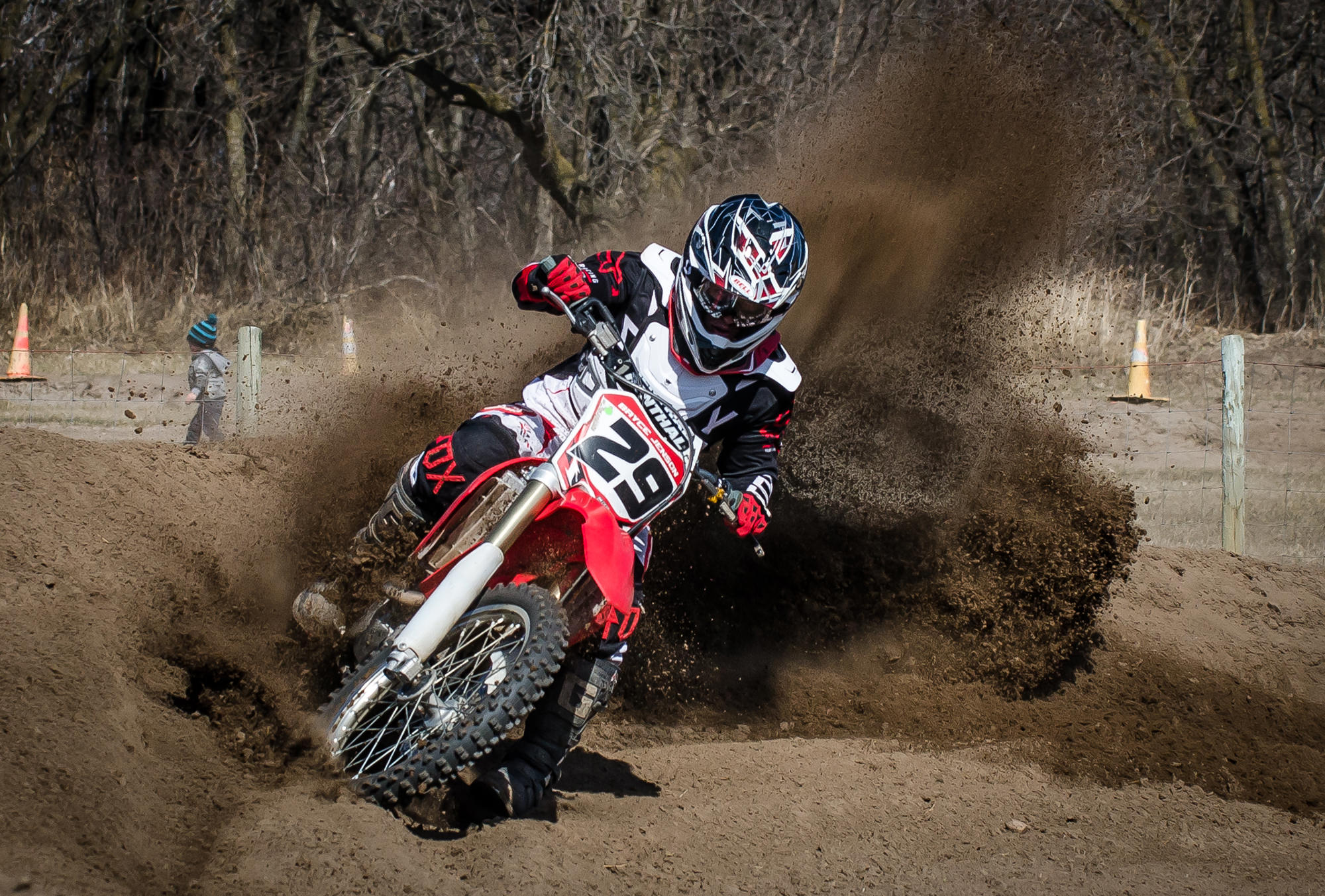I quite often receive the following question:
“What Nikon or Canon camera settings should I use for sports photography?”
The easy answer is the “sports” or “action” modes available on most modern DSLRs. This is usually denoted with a running figure icon on the camera’s control wheel. Unfortunately, sports modes only ensure the fastest shutter speed possible (greater than 1/500 second), but they don’t necessarily capture the best possible image. A better option when shooting sports photography is to use what is called the “aperture priority mode”.
Setting Your Camera to Aperture Priority Mode
On a Nikon camera body, this mode is indicated with an “A” on the command or control wheel. On a Canon camera body, it is indicated as “Av”. This setting allows the photographer to isolate one setting, the aperture size, for modification. The camera does the other heavy lifting for you by modifying shutter speed for ideal exposure.
How To Use Aperture Priority Mode To Capture Action
Once in Aperture Priority Mode, use the control wheel to change your aperture value to the smallest possible number. This setting corresponds to the widest lens opening. This will allow the maximum amount of light your particular camera lens is capable of passing to the sensor.
Dealing With Motion Blur
If your camera fails to stop the motion of your subject even with maximum aperture size, try the following:
- Raise the “ISO” or sensitivity of your camera to light until you achieve the shutter speed you desire.
- If you find your images are still blurred (shutter speed too slow) or your images look too grainy or “noisy,” look for a lens to replace your existing “kit” lens that will allow more light to reach the camera’s sensor. Lenses I recommend on a budget are the 50 mm (nifty fifty) prime lens (doesn’t zoom) with a constant aperture of 1.8. The trade-off with this lens is YOU are the zoom. You will have to move closer to the action you wish to capture. Another relatively inexpensive option would be the 85 mm with an aperture of 1.8. If you can’t do without a zoom lens, then I suggest saving hundreds of dollars and picking up a Tamron 70-200 mm lens with an aperture of 2.8. This aperture stays the same even when you are zoomed all the way in, which results not only in better light transmission but also better blurring of your subject.
This is only the first in what I hope to be many future posts, so if there is something you would like me to cover or explain better in future posts, please comment. In the meantime, here is another tutorial video that explains the benefits of aperture priority mode in photography:
